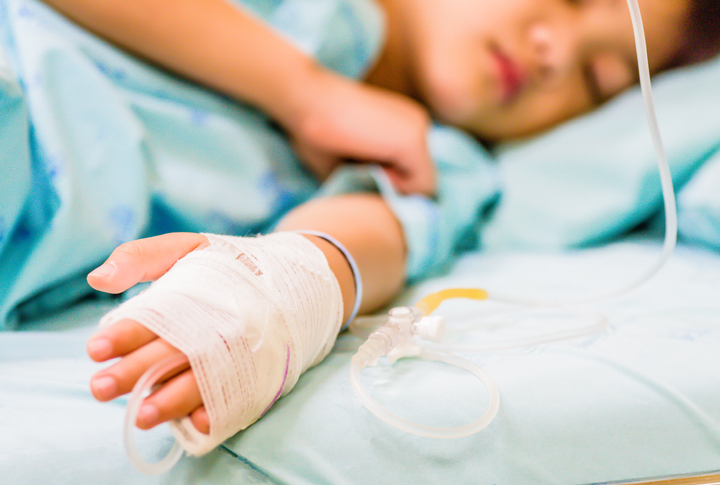Developing a New Diagnostic Test for an Aggressive Childhood Cancer
30 Apr 2019

An Early Diagnosis can Improve the Chance of Survival for a Child with Neuroblastoma
A new study validates a more simple and rapid liquid chromatography coupled to tandem mass spectrometry (LC-MS/MS) method suitable for clinical application. Neuroblastoma is an aggressive nervous system cancer that affects around 100 children in the UK – mostly under five years old. Representing around five percent of all children’s cancers, the disease disproportionately accounts for at least 15 percent of deaths. A timely and effective diagnosis is key – as the sooner a child is diagnosed, the better their chances of survival.
A clinical diagnosis of neuroblastoma is usually through an abdominal ultrasound – but a urine test could offer a simpler, faster approach. As the disease often starts in the adrenal glands, this can lead to increases in the level of catecholamines in the body. So detecting elevated levels of the metabolic by-products of these hormones – homovanillic acid (HVA) and vanillylmandelic acid (VMA) – can help support a clinical diagnosis of the disease. But the current analytical methods to detect and measure these chemicals in urine samples have limitations – and so robust new techniques are needed.
A Robust New Clinical Diagnostic Test
A team of scientists at Huazhong University of Science and Technology in China work to develop and validate a simple, rapid and easy LC-MS/MS method for the simultaneous measurement of VMA and HA in urine.1 Using ultrapure water from an ELGA laboratory water purification system to create stock solutions of VMA and HVA and for the internal standards, the researchers showed that the new technique is highly sensitive, with a lower limit of quantification and the limit of detection of 0.50 and 0.25 µmmol/L for both metabolites.
The team then evaluated its diagnostic performance by measuring the levels of VMA and HA in a variety of urine samples collected from children undergoing clinical investigations from July 2015 to May 2018 in Tongji Hospital. Of these, 19 children were confirmed with a diagnosis of neuroblastoma. The urine samples were collected in two different ways – either over a 24-hour period or randomly – with the latter much easier to collect, particularly in children.
Factoring in a Child’s Age
The researchers first established the normal ranges for the levels of VMA and HA for children across different age groups – for both 24-hour urine and random samples. They found the levels of these biomarkers changed according to a child’s age and differed across sample types, clearly demonstrating the importance of incorporating age-adjusted children’s reference intervals for correct interpretation of test results.
The team went onto achieve 85 percent diagnostic sensitivity and 95.7 percent specificity by measuring the levels of both biomarkers in 24-hour urine samples, incorporating age-adjusted reference intervals. However, they only had a small number of random urine samples with elevated levels of catecholamines – and so larger sets will be needed to evaluate performance when the test is applied to samples collected in this simpler way. In this study, researchers thoroughly develop and validate a simple, rapid and robust LC-MS/MS method for the simultaneous measurement of VMA and HA in urine – laying the foundations for its routine application in clinical laboratories to help diagnose neuroblastoma.
Why Choose ELGA LabWater?
ELGA has been a trusted name in pure and ultrapure water since 1937. Our history of innovation helps us to research new water purification technologies and techniques. We help you to achieve consistent, accurate results.
References:
1. Shen, Y. et al, Analytical validation and clinical application of urinary vanillylmandelic acid and homovanillic acid by LC-MS/MS for diagnosis of neuroblastoma. 2019 Jan 11:e4484. doi: 10.1002/bmc.4484. [Epub ahead of print]
Dr Alison Halliday
After completing an undergraduate degree in Biochemistry & Genetics at Sheffield University, Alison was awarded a PhD in Human Molecular Genetics at the University of Newcastle. She carried out five years as a Senior Postdoctoral Research Fellow at UCL, investigating the genes involved in childhood obesity syndrome. Moving into science communications, she spent ten years at Cancer Research UK engaging the public about the charity’s work. She now specialises in writing about research across the life sciences, medicine and health.
